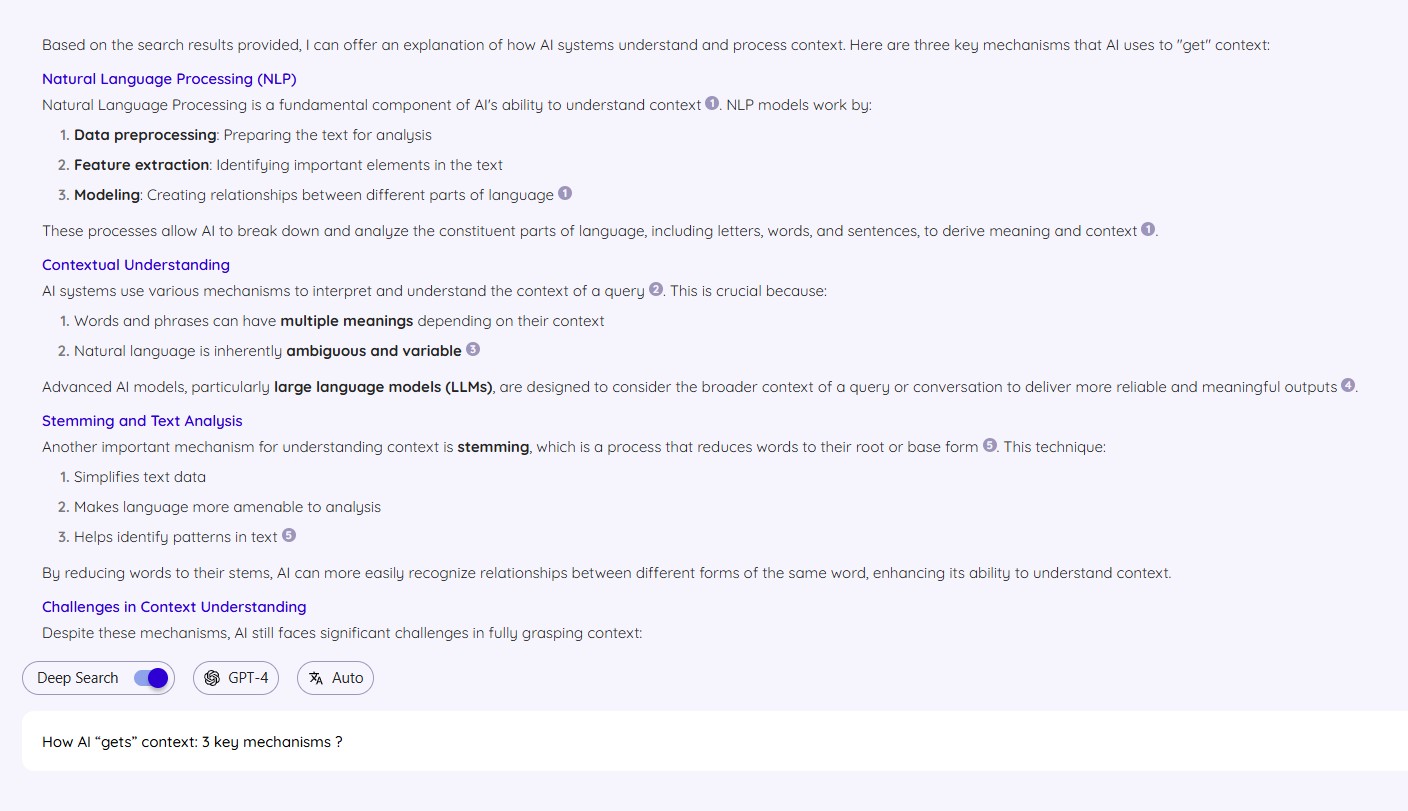How does contextual analysis improve AI accuracy ?

Ask a chatbot for dinner ideas, and it suggests ice cream… in the middle of a snowstorm. Without context, even the most advanced AI can miss the mark. But with contextual analysis, AI stops being a clumsy, hit-or-miss assistant and starts acting like a smart, intuitive partner, one that actually understands what you mean, not just what you say.
This shift is a game-changer, improving everything from customer support to predictive maintenance. Instead of rigid, one-size-fits-all responses, AI can adapt, process real-world factors, and deliver smarter, more relevant answers.
Why context is AI’s secret weapon ?
Contextual analysis lets AI understand, not just process.
It’s the difference between:
- Generic reply: “Turn left in 500 meters.”
- Context-aware reply: “Turn left now—the bridge ahead is closed.”
By weaving real-world nuance into data, AI stops guessing and starts thinking. This shift transforms AI from merely functional to genuinely intelligent, empowering businesses to deliver relevant, real-time solutions.
Try Wiseone for free with a 7-day pro trial
no credit card required

How AI “gets” context: 3 key mechanisms
Context augmentation
What is it? Injecting external data such as location, time, and user history to create relevance.
Example: A weather app recommending sunscreen and sunglasses because it knows you’re at the beach.
Why it matters: Context-aware AI can provide hyper-relevant suggestions, enhancing user experience and decision-making.
Contextual retrieval
What is it? Fetching data with its original meaning intact.
Example: A legal AI pulling case laws specific to your jurisdiction rather than random precedents.
Why it matters: This ensures precision and accuracy, critical for fields like finance, law, and healthcare.
Dynamic contextual analytics
What is it? Adapting to real-time changes such as market fluctuations or sensor data.
Example: Supply chain AI rerouting shipments during a port strike to minimize disruption.
Why it matters: Real-time adaptation can reduce risks and seize opportunities, giving businesses a competitive edge.
Why this matters: 3 game-changing benefits
These benefits show how contextually aware AI is setting a new standard for smarter technology. Let’s explore why embracing context is crucial for delivering accuracy, personalization, and speed.
Fewer “AI hallucinations”
Context anchors AI to facts instead of fabrications. For instance, medical chatbots can now cite peer-reviewed studies rather than inventing treatments.
Personalization that feels human
Imagine Netflix’s “Because you watched…” recommendations—but smarter. Context-aware AI remembers your vegan diet, allergy restrictions, and love for spicy food, offering highly relevant options.
Smarter decisions, faster
Retailers can predict demand spikes before trends go viral by analyzing social media chatter and sales history simultaneously.
Join the Wiseone community
They’re talking about us on social media.
Challenges: The fine print
Privacy risks
More context means more data, raising privacy concerns. Solutions like anonymization and federated learning can reduce risks.
Complexity overload
Too much context can confuse AI. The fix? Prioritize critical signals, such as user intent over minor errors or typos.
Bias creeping back
Even with CAPFI, regular audits are crucial to ensure fairness and accuracy.
The future: Context everywhere
By 2030, contextual AI will be the norm, driving innovation in ways we’re just beginning to imagine:
- Shared context hubs: Hospitals sharing anonymized patient data (with consent) to train diagnostic AI.
- Anticipatory AI: Education tools that adapt to your learning style before you even realize you need help.
Contextual analysis isn’t just about making AI more accurate; it’s about making AI genuinely useful and human-friendly. For multitasking B2B readers, this upgrade means fewer robotic interactions and smarter, more valuable experiences.
Behind the scenes: The tech making it possible
Contextual embeddings
Think of these as AI’s “world dictionaries”, mapping words to real-world meanings (e.g., “apple” = fruit vs. tech giant). This makes language interpretation far more accurate.
Generative AI for context creation
Tools like GPT-4 generate synthetic training data that mirrors real-world patterns, expanding the AI’s contextual understanding.
CAPFI methodology (Context, Accuracy, Personalization, Fairness, Integrity)
A fairness-focused framework that tests AI in diverse scenarios to curb bias (e.g., ensuring loan approval AI ignores biased indicators like zip codes).
Real-world wins: Where context reigns
- Customer support bots: No more repeating your issue, bots remember conversation history and context.
- Legal AI: Analyzes contracts with case law, judge tendencies, and local regulations to improve outcomes.
- Predictive maintenance: Factories use sensor data and weather forecasts to prevent machine failures, saving time and money.